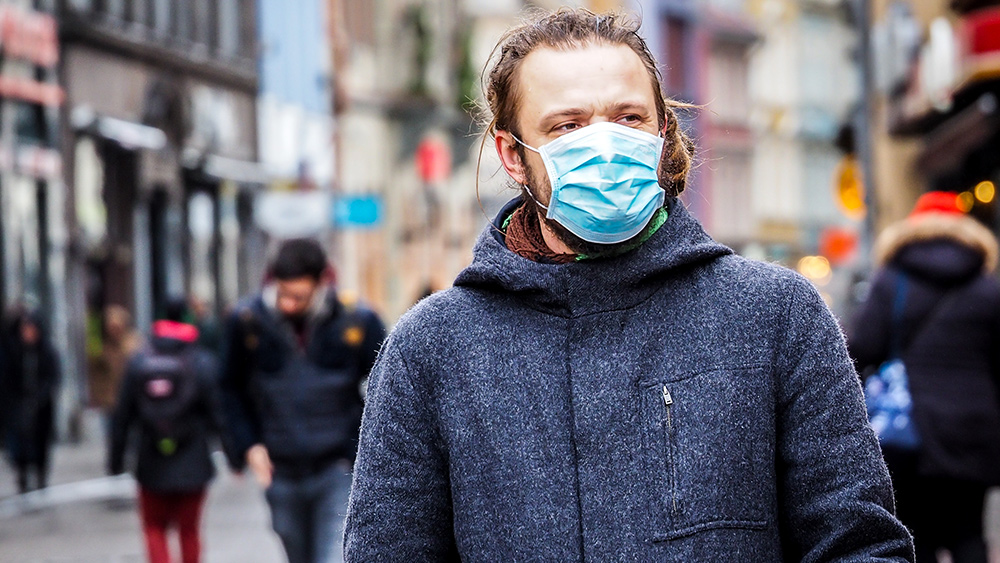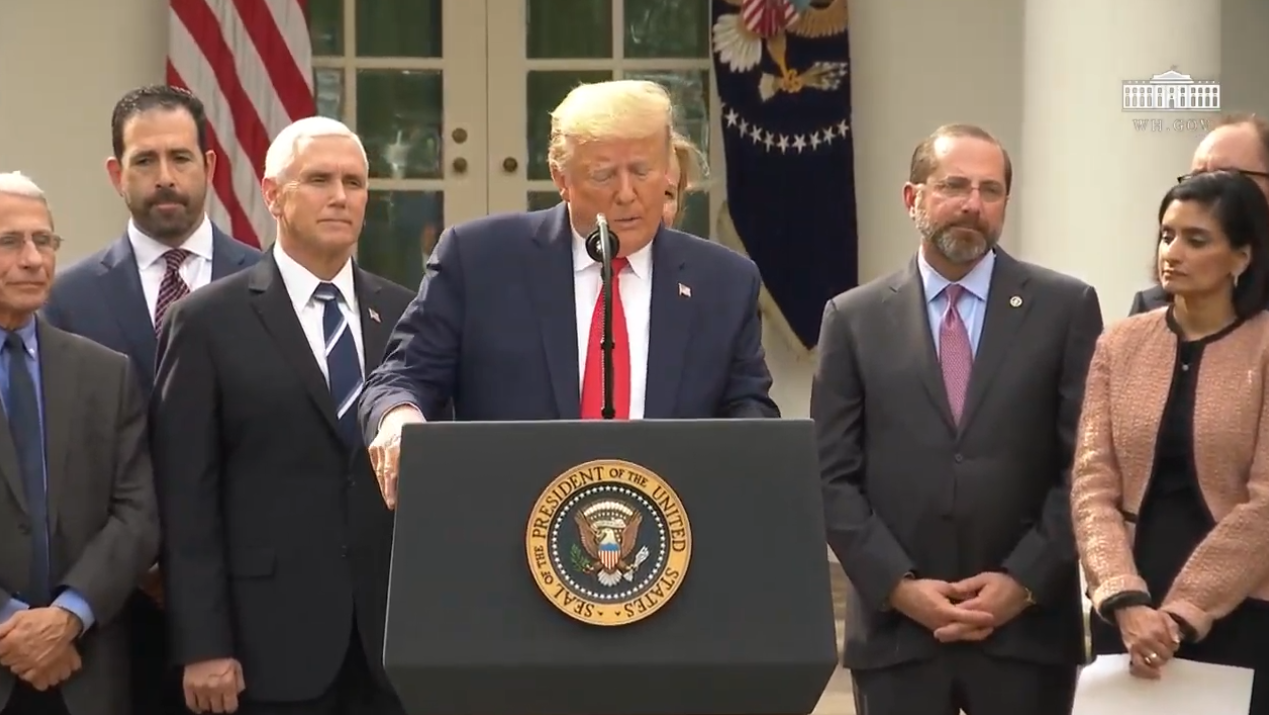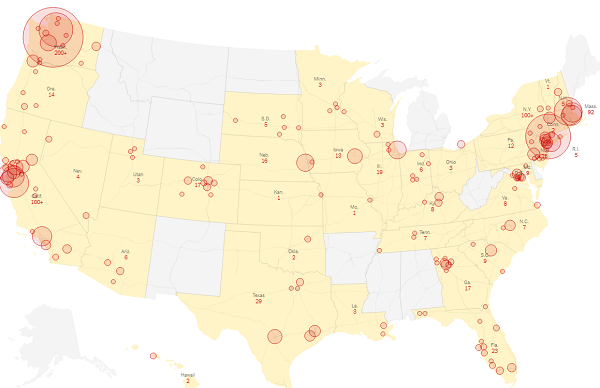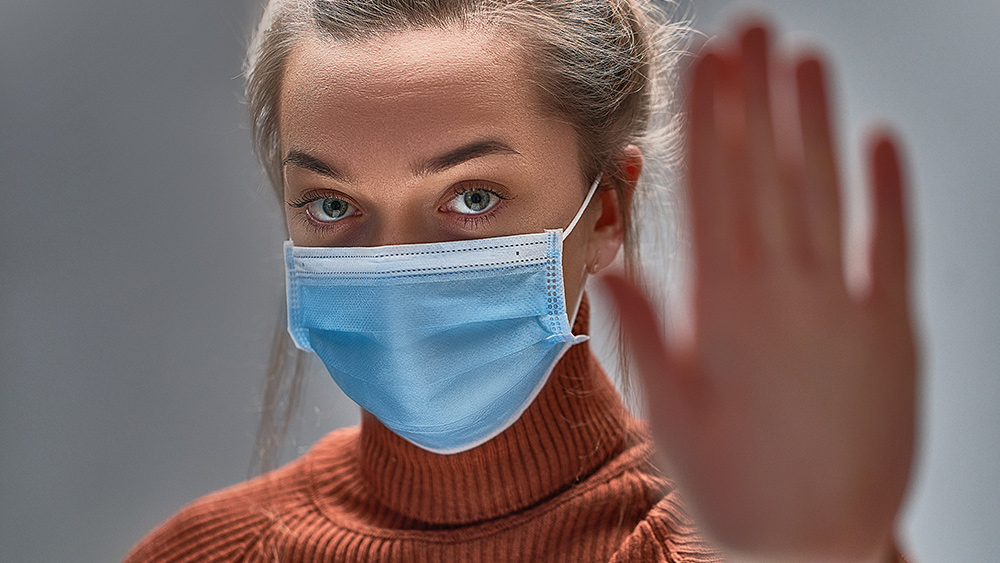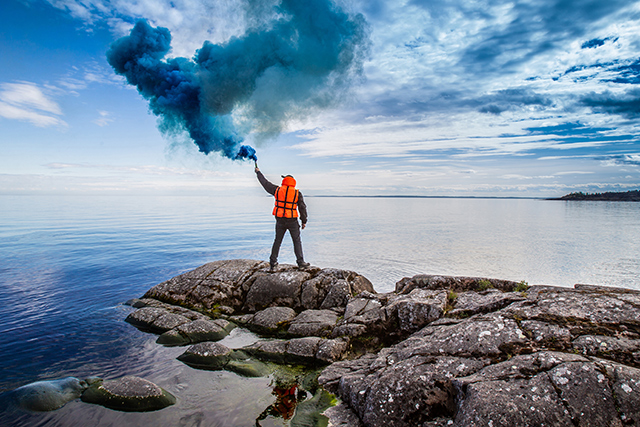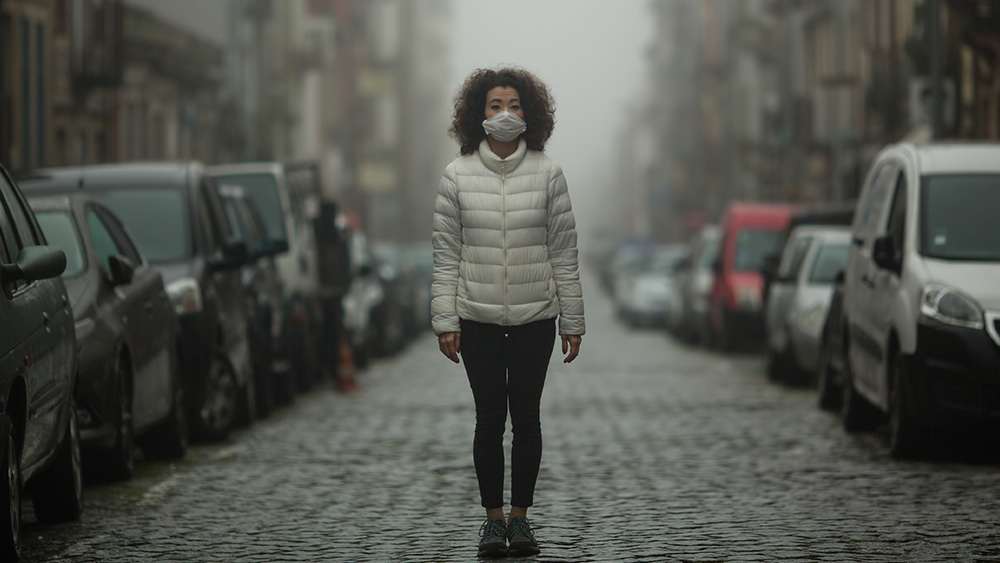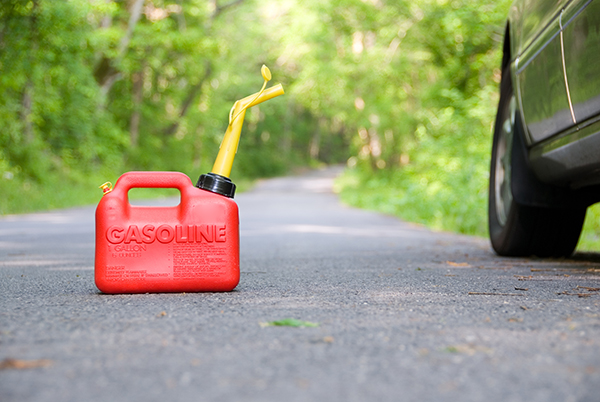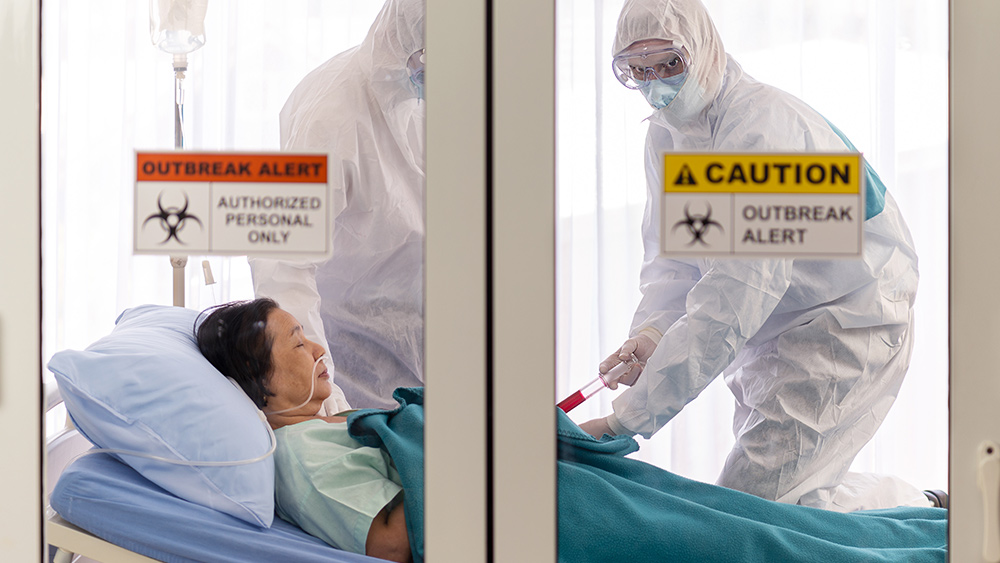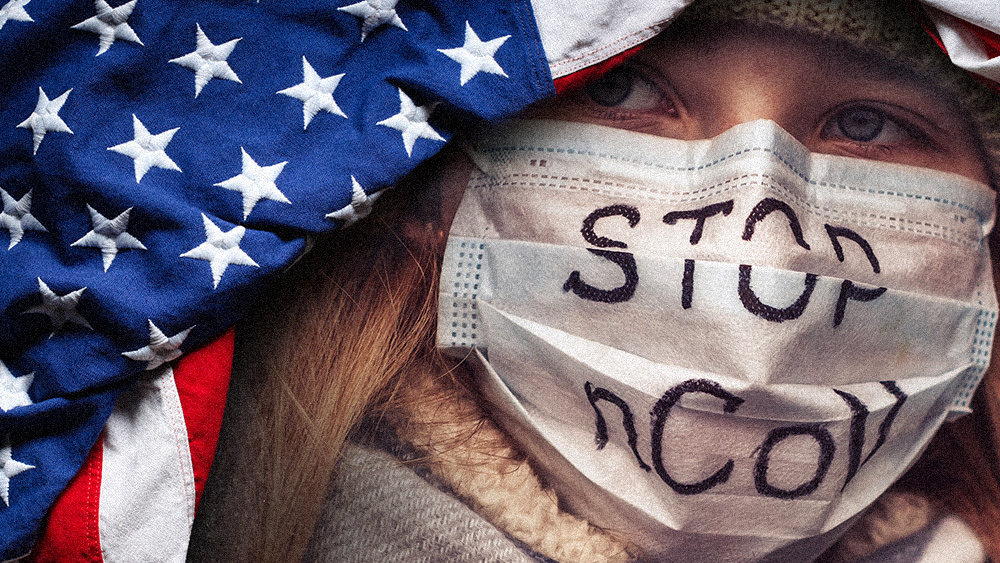Iran’s coronavirus crisis is so bad they’re excavating mass graves so large they can be SEEN FROM SPACE
03/13/2020 / By Arsenio Toledo
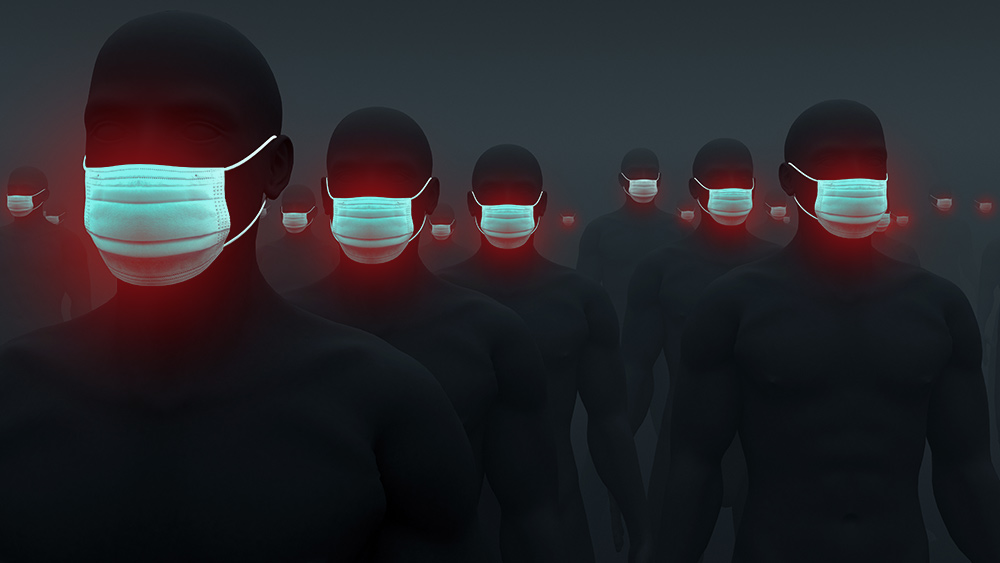
Iran is building so many burial pits that satellite photos were able to detect them. These new satellite images show that the coronavirus outbreak in Iran may either be worse than what government sources are reporting, or they may be preparing for a possible disaster.
In the city of Qom, just 80 miles south of Tehran, there’s a massive cemetery known as the Behesht-e Masoumeh Complex, which lies around six miles north of the city center. Satellite images from as early as February 21 show that excavation teams have been hard at work creating a new section in the graveyard. By the end of February, two large trenches, around 100 yards in length total, had been dug out — they were so large that they were visible from space.
According to video testimony, official statements as well as analysis from experts, this excavation project wasn’t just a routine expansion of a cemetery, but these fresh graves were dug out to accommodate the country’s near-uncontrollable death toll from the coronavirus pandemic.
The pictures of the new graves were taken on March 1 by Maxar Technologies, a private space technology company based in Colorado. A senior imagery analyst from Maxar told Vox that “the trenches were made very quickly” and that these new graves mark a clear departure from the country’s past burial practices when it comes to individual and family grave plots.
Furthermore, the same Maxar analyst said that they have an image of a large pile of lime right next to the freshly-dug plots. Iranian health officials have previously said that they’re using lime to bury those killed by COVID-19.
A video released by BBC Persia purportedly shows the mass graves in Bahesht-e Masoumeh. In the video, the narrator describes the scenes he’s seeing in the cemetery. (Related: Leaked video published by the BBC shows victims of coronavirus in Iran PILING up in stacks of body bags.)
“This is the section for the coronavirus victims,” says the narrator, as the camera pans to a small portion of the trench, showing small, simple markers placed on mounds of dirt and people in blue protective suits standing nearby. “More than 80 [people] have been buried in this section so far, and they say only 34 deaths.” The man is citing Iran’s official death toll on February 28.
Fabian Hinz, a research associate and geospatial analysis expert for Middlebury Institute of International Studies at Monterey, reviewed the video as well as another video that was also supposedly shot on sight, said that “unique geographical markers” in the videos match landmarks found in the massive graveyard. This provides evidence to support the hypothesis that the trenches at Bahesht-e Masoumeh were made to supply Qom with more burials for coronavirus victims.
Mistrust and mishandling hamper Iran’s efforts to combat outbreak
As of press time, Iran reports having 10,075 cases of coronavirus and 429 deaths. They also reported 75 new deaths over the past 24 hours — the most deaths reported by Iran in a single day.
Listen to the helpless pleas of this healthcare worker from Iran: "Please take #CoronaVirus seriously. Don't come out of your homes. We healthcare workers are exhausted. We cannot cope with it any longer".
Due to the negligence of authorities, the virus has spread all over Iran pic.twitter.com/Q4udfdj0b4
— Masih Alinejad 🏳️ (@AlinejadMasih) March 12, 2020
Reports came in last week that dozens of dead Iranians were being kept in black body bags, unburied, on the floor of a morgue in Qom, meaning that morgues all over the city may be struggling to find space for all of the dead. This underscores how one of the holiest cities in Shia Islam is struggling to contend with so many deaths in such a short span of time.
Two medical workers in Qom even told reporters that they worry the coronavirus may put an end to traditional Islamic burial practices, which involves washing the body with soap and water before laying it to rest, due to the fears over catching the infection from dead bodies. Instead, the bodies are being treated with lime so that the coronavirus doesn’t infect the soil. Ali Ramezani, director of Bahesht-e Masoumeh, told a state-run news agency that there was a “pile-up” of bodies at the cemetery.
Fear and confusion as Iranian government officials keel over due to their COVID-19 infections
Iran is currently being criticized for its lack of transparency with regards to the progression of the outbreak in their country. Many experts believe that the real infection rate and death toll are much higher than what the Iranian government reporting.
For example, Mohammad Hossein Ghorbani, a representative for the health ministry of Gilan province, commented that the death toll in the province alone was over 200 — which would represent nearly half of the entire country’s reported deaths.
Over the weekend, the National Council of Resistance of Iran (NCRI), a Paris-based political organization made up primarily of Iranian expatriates dedicated to the toppling of the country’s current regime, held an online conference that featured addresses by Iranian nurses, medical practitioners and health experts from 19 different locations. Their main topic: the beginning and the spread of the coronavirus outbreak in their home country. Some who spoke at the conference put the real death toll at over 2,000.
While the Iranian regime claims the #Coronavirus death toll for the entire country is 194, the Health Minister's Plenipotentiary Representative in Gilan Province says the death toll in Gilan province alone is 200. https://t.co/uPYclIr8NW
— NCRI-FAC (@iran_policy) March 8, 2020
A surprising number of current and former government officials in Iran have either been infected by the coronavirus or have succumbed to it. Here are the 14 known current and former politicians who have COVID-19:
- Eshaq Jahangiri, First Vice President
- Masoumeh Ebtekar, Vice President for Women and Family Affairs
- Reza Rahmani, minister of Industry, Mines and Business
- Ali Asghar Mounesan, acting minister of Cultural Heritage and Tourism
- Iraj Harirchi, deputy minister of Health
- Esmail Najar, head of emergency response organization, the National Disaster Management Organization
- Pirhossein Koolivand, head of emergency medical services
- Mohammad Sadr, member of the Expediency Council, which acts as an advisory council for the Supreme Leader, Ali Khamenei
- Mostafa Pourmohammadi, former minister of justice and adviser to the current justice minister
- Farideddin Haddad-Adel, close ally of the Supreme Leader, his sister is Khamenei’s daughter-in-law
- Mojtaba Zolnour, member of parliament (MP) and chair of the Committee for National Security and Foreign Affairs
- Masoumeh Aghapour Alishahi, MP
- Zohreh Elahian, MP
- Mahmoud Sadeghi, MP
Furthermore, the speaker for Iran’s parliament reported that 23 MPs have tested positive for COVID-19, including the four MPs listed above. The country’s has also experienced an unprecedented amount of clerics and government officials dying from the virus. Here are 14 confirmed deaths due to COVID-19:
- Mohammad Mirmohammadi, member of the Expediency Council
- Fatemeh Rahbar, newly-elected MP
- Hadi Khosroshahi, former ambassador to Vatican City
- Hossein Sheikholeslam, former ambassador to Syria and former adviser to the current minister for foreign affairs
- Ahmad Toyserkani, adviser to the current head of the judiciary
- Reza Pourkhanali, official in the ministry of agriculture in Gilan province
- Mohammadreza Rahchamani, former MP
- Mousa Torabzadeh, former prosecutor
- Farzad Tazari, former commander of the Islamic Revolutionary Guard Corps (IRGC) and former deputy of the IRGC’s political bureau
- Ayatollah Reza Mohammadi Langroudi, a high-ranking cleric
- Ayatollah Mohsen Habibi, high-ranking cleric and member of the Supreme Council of Tehran’s Seminaries
- Ali Hosseini, cleric and head of the Islamic Development Organization
- Akbar Dehghan, cleric and head of Qom seminary’s interpretation staff
- Reza Modaressi, cleric from Qom
“We Iranians are about to lose many of our friends and families to this epidemic,” said Sina Dashti, a member of NCRI and an infectologist residing in Sweden.
“Iranians are fighting with two enemies. One is COVID-19 and the second is the Iranian regime. Transparency is key to fighting epidemics. The regime is preventing news of the epidemic from being broadcast.”
Sources include:
Tagged Under: burial pits, Collapse, coronavirus, covid-19, deaths, disaster, infections, Iran, Iran coronavirus cover up, Iran coronavirus outbreak, mass graves, outbreak, pandemic, Qom, SHTF, superbugs, Tehran, virus
RECENT NEWS & ARTICLES
COPYRIGHT © 2017 DISASTER NEWS

